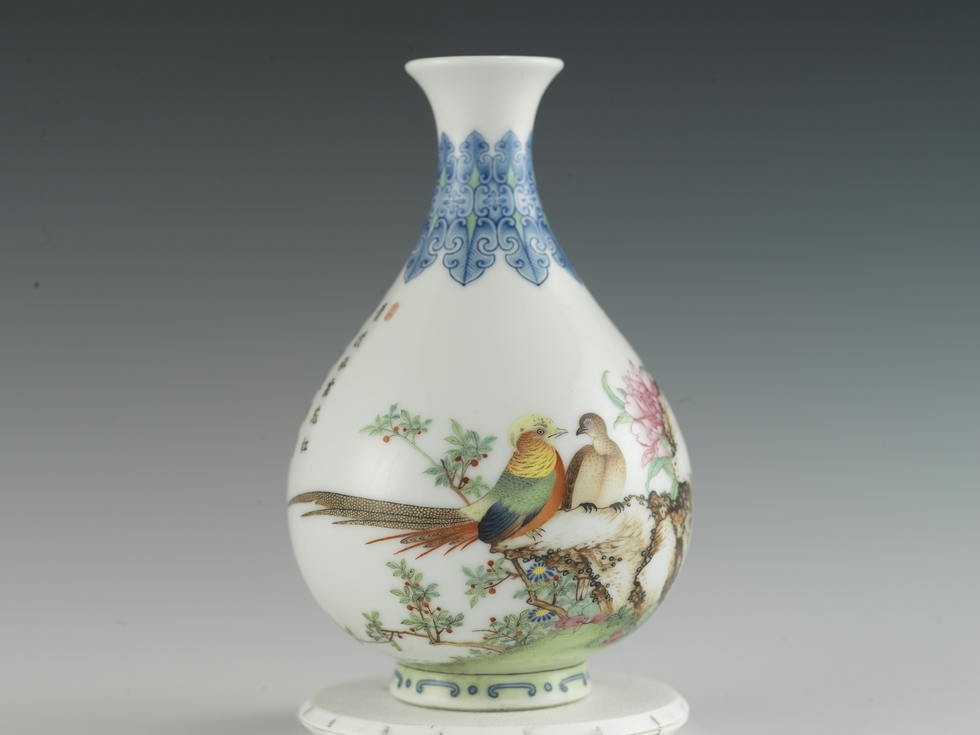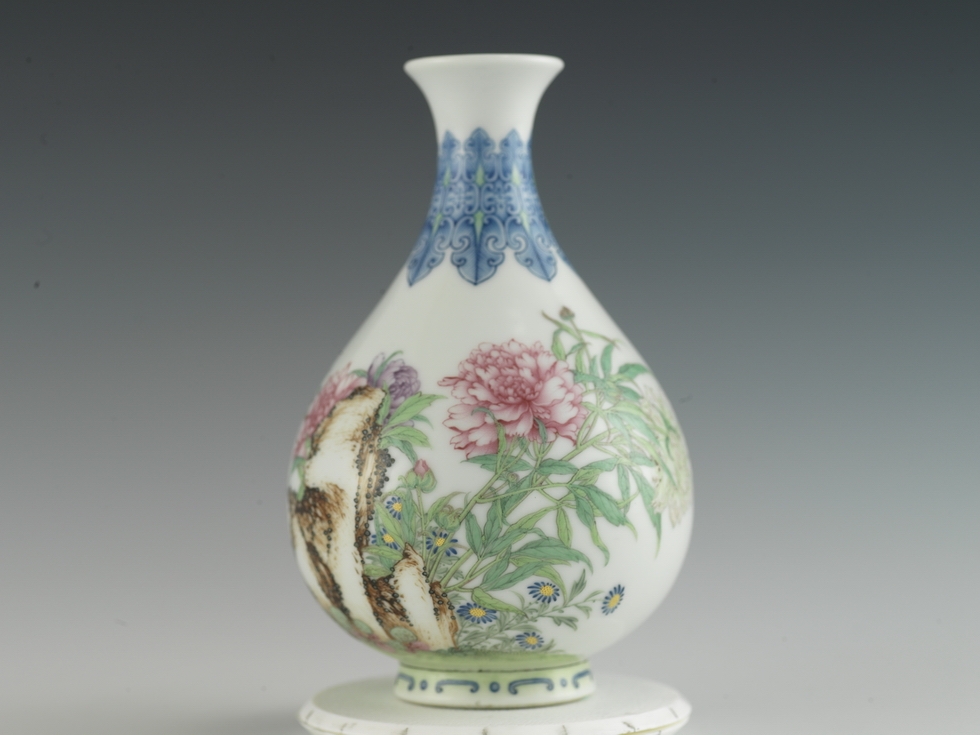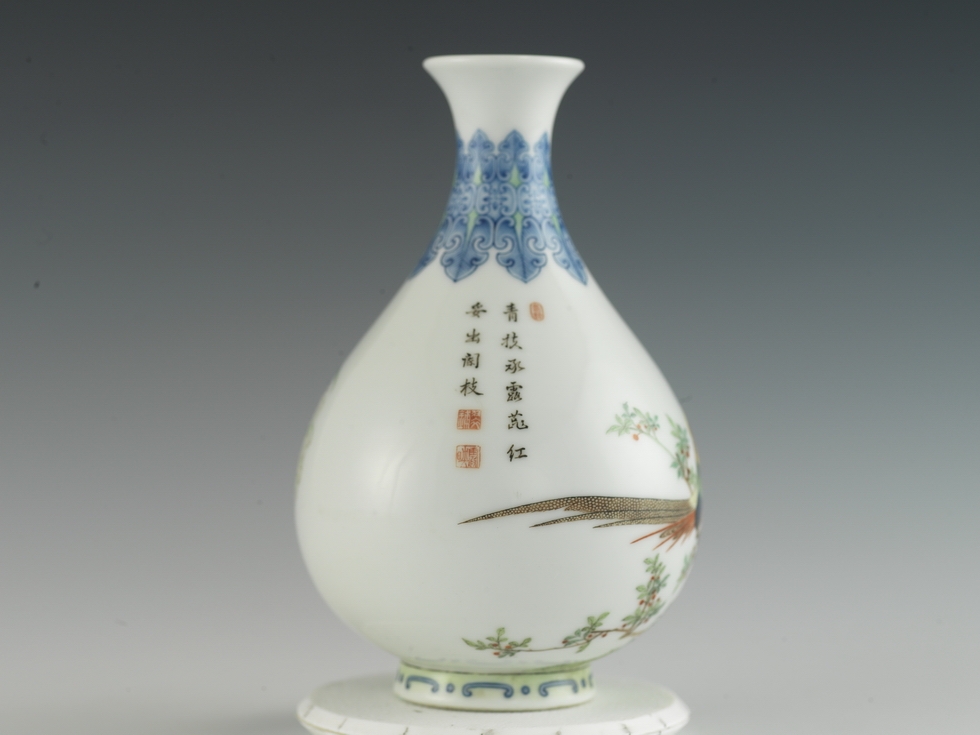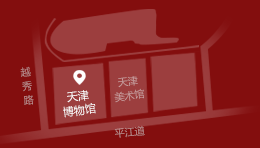清 乾隆款珐琅彩芍药雉鸡图玉壶春瓶
清乾隆(1736—1795)
高16.3厘米 口径4厘米 底径5厘米
明代有一种新兴的特殊工艺品,它是在铜胎上,以蓝为地色,掐以铜丝,填上红、黄、蓝、绿、白等几种色釉而烧成的精致工艺品。由于其蓝色在明景泰年间最好,因此有“景泰蓝”之称。清代前期,从国外进口有与景泰蓝相似的金珐琅、铜珐琅等品物。当时国内也盛行在铜、玻璃料和瓷器等不同质地的胎上,用进口的各种珐琅彩料描绘而成的珐琅彩器,其中在瓷胎上绘画的称“瓷胎画珐琅”,也就是驰名中外的珐琅彩瓷器。珐琅彩瓷,是清康熙、雍正、乾隆三朝的宫廷御用瓷。创始于康熙末年,雍正朝制作日趋精美,乾隆时期更加工巧精细,达到了登峰造极的境地。
天津博物馆所藏清乾隆款珐琅彩芍药雉鸡图玉壶春瓶,是国宝级文物。高16.3厘米,口径4厘米,底径5厘米。小撇口,长颈,腹部下端丰满,圈足。瓶胎质细腻洁白,胎体轻薄,釉面莹润如玉,上用珐琅彩绘画。颈部用蓝料彩绘上下两组蕉叶纹,腹部珐琅彩绘芍药雉鸡图:两只雌雄雉鸡栖身于山石上,彼此相偎,作态亲昵,周围衬以芍药花及秋季花草。空白处墨彩题诗:“青扶承露蕊,红妥出阑枝。”引首朱文“春和”印,句尾白文“翠铺”朱文“霞映”二方印。瓶底赭彩四字方款“乾隆年制”。这件玉壶春瓶,构图十分精美,芍药雉鸡寓意金鸡富贵,有吉祥的含义。画工精细入微,绘画图案取自清代宫廷画家的手稿。此瓶集诗、书、画、印于一身,有如一幅展开的画卷,称之国宝名副其实。
Painted enamel Chinese peony and pheasant design pear-shaped vase with Qianlong mark
Qing dynasty, Qianlong period(1736-1795)
Height 16.3cm, Diameter of rim 4cm, Diameter of foot 5cm
This vase is made of fine pure white fired clay. The body is light and thin and the glaze has a jade-like lustre, with painted enamels on the glaze. The top and the bottom of the neck have been decorated with blue plantain leaf designs. The body is decorated in painted enamels, depicting pheasants and peonies. A male and a female pheasant perch on a mountain-shaped rock. Huddled together they create an air of intimacy. They are surrounded by Chinese peony and autumn plants and flowers. The empty white area features a poem in black script, which reads “Green holds up the dewy stamen, red passes through the screen-like branches”. The couplet is preceded by an image of a positive legend seal which reads “Spring Harmony”; it closes with a negative legend seal reading “Jade Retreat”and another positive seal image which reads “Sunrise Glow”. On the base is a square mark with four ochre characters which read “made in the Qianlong period”.
The imagery on this vase is beautifully composed. The subjects of the peonies and pheasants are symbolic of the mythical golden cockerel, filled with auspicious connotations of wealth and honour. The craftsmanship is meticulous and subtle. The painting style is derived from the Qing Palace Academy painter Jiang Tingxi. This vase combines the arts of poetry, calligraphy, painting and seals, resembling an open hand scroll.







 电话:022-83883000
电话:022-83883000 传真:022-83883088
传真:022-83883088 地址:天津市河西区平江道62号
地址:天津市河西区平江道62号